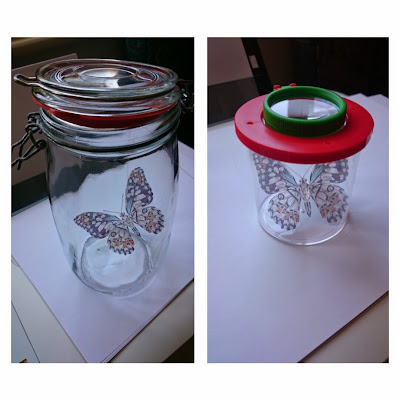Whilst finalising the final materials and techniques for making the butterflies for the exhibition, I also thought that putting a few in the glass containers would help me to decide on the final scale and how I want them to be displayed. I liked the way that Polly Morgan uses glass cloches to display her taxidermied animals, but I wanted to use more modern containers, to go with the more modernised Victorian theme.
The initial size that I created and cut out were a little too big, as the wings touched the edge of the glass, and they were a little bigger than life-size. I also want to hang multiple different ones in the same tall container, so making them smaller will mean they fit better with the height of the glass holder.





























